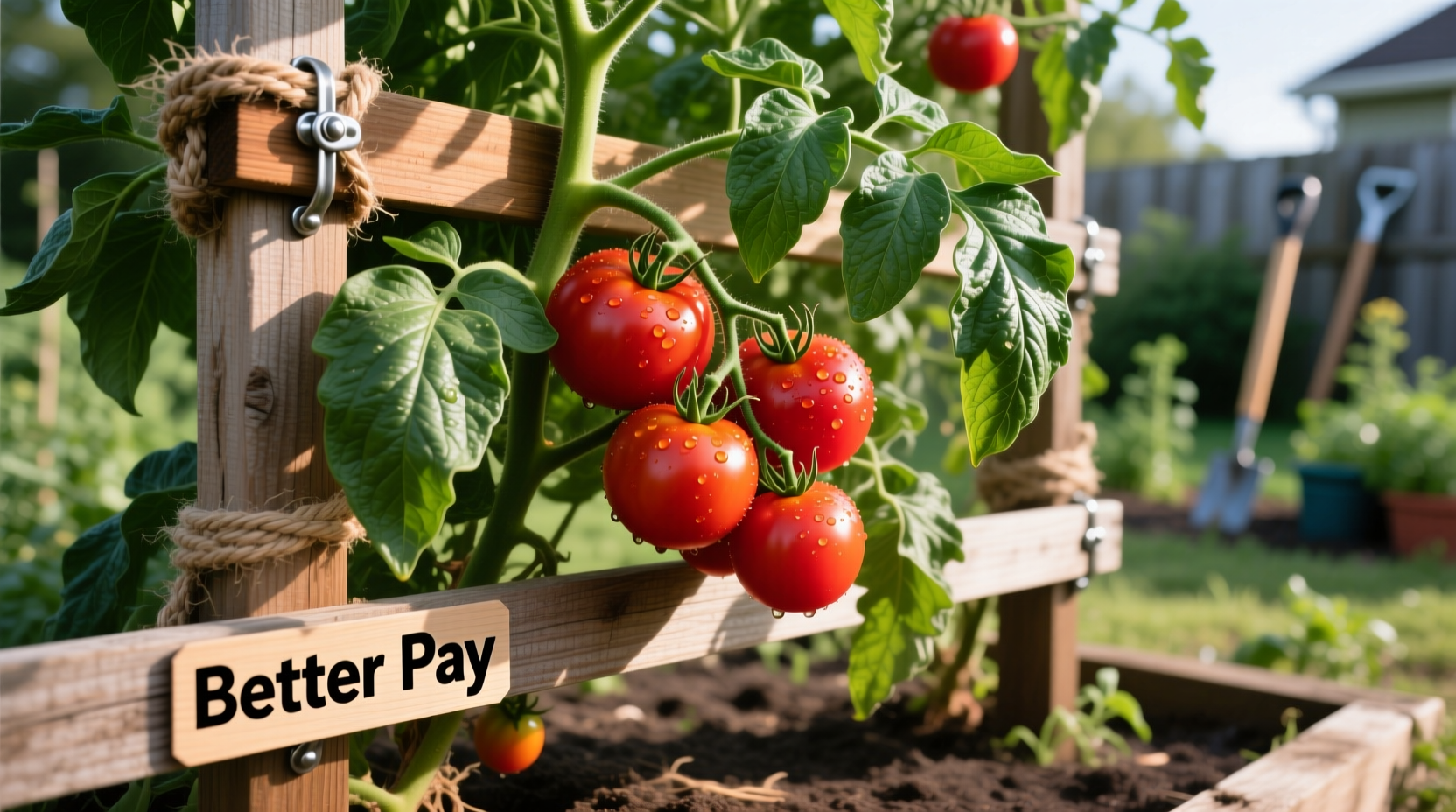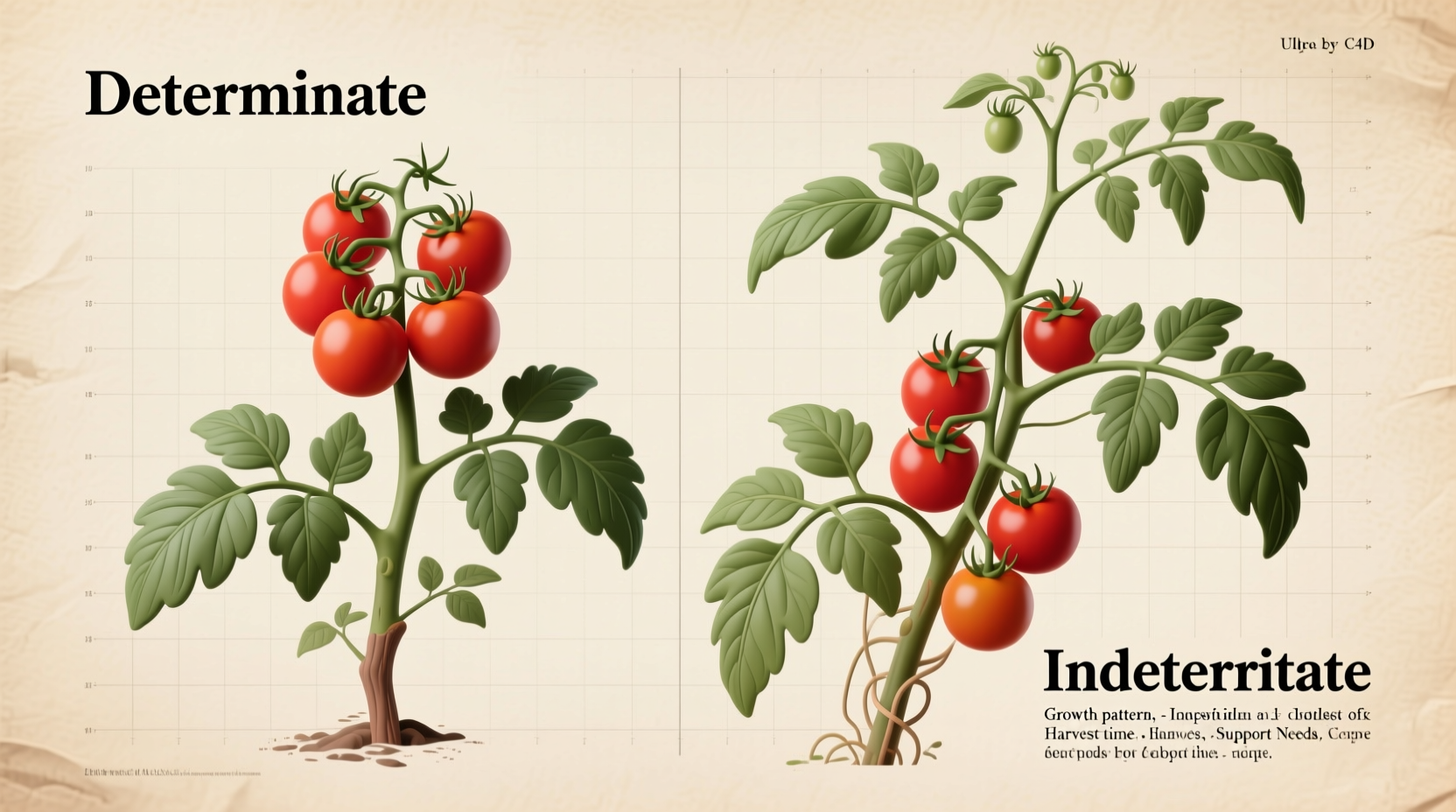Understanding Tomato Growth Habits: Why It Matters for Your Garden
When planning your vegetable garden, understanding whether a tomato variety is determinate or indeterminate directly impacts your harvest strategy, space requirements, and overall gardening experience. Better Boy tomatoes fall squarely in the indeterminate category—a crucial detail that shapes how you'll need to support, prune, and harvest these popular plants.
What Makes Better Boy Tomatoes Indeterminate?
Indeterminate tomatoes continue growing and producing fruit until killed by frost, with vines that can reach 6-10 feet tall. Better Boy exhibits all classic indeterminate characteristics:
- Continuous flowering and fruit set throughout the season
- Vigorous, vining growth habit requiring substantial staking or caging
- Production of side shoots (suckers) that need regular pruning
- No predetermined end point to the growing season
Developed in the 1940s by W. Atlee Burpee & Co., Better Boy was bred specifically for disease resistance and consistent production—qualities that align perfectly with the indeterminate growth pattern preferred by home gardeners seeking extended harvests.

Determinate vs. Indeterminate: Practical Differences for Gardeners
Understanding these growth habits isn't just botanical trivia—it directly affects your gardening success. Consider these practical differences when planning your tomato patch:
| Characteristic | Determinate Tomatoes | Indeterminate Tomatoes (Like Better Boy) |
|---|---|---|
| Growth Habit | Bush-type, compact (3-4 ft) | Vining, continues growing (6-10+ ft) |
| Harvest Period | Concentrated 2-3 week window | Continuous production until frost |
| Support Needs | Minimal (small cages) | Substantial (tall stakes/cages) |
| Pruning Requirements | Little to none | Regular sucker removal needed |
| Ideal For | Canning, space-limited gardens | Fresh eating, extended harvest |
When Better Boy's Indeterminate Nature Shines
Better Boy's indeterminate growth pattern makes it particularly valuable in specific gardening scenarios:
For Gardeners Seeking Continuous Harvests
If you prefer picking fresh tomatoes daily for salads and sandwiches throughout summer and early fall, Better Boy's indeterminate nature delivers exactly this benefit. Unlike determinate varieties that flood you with fruit all at once, Better Boy provides a steady supply that matches typical household consumption patterns.
In Regions with Long Growing Seasons
Gardeners in USDA zones 7 and higher particularly benefit from Better Boy's extended production. According to research from the University of California Agriculture and Natural Resources, indeterminate varieties like Better Boy can produce 20-30% more total fruit in areas with growing seasons exceeding 150 days compared to determinate types (UC ANR, 2023).
For Container Gardeners with Vertical Space
While Better Boy requires substantial support, its indeterminate growth actually works well in containers when given proper vertical structure. The Clemson Cooperative Extension notes that indeterminate varieties often outperform determinate types in containers when provided with 15-20 gallon pots and 6-foot trellising (Clemson HGIC, 2024).
Maximizing Better Boy's Potential: Essential Growing Tips
To get the most from your indeterminate Better Boy plants, follow these research-backed practices:
Support System Requirements
Install sturdy support systems at planting time to avoid root damage later. Better Boy's vigorous growth demands:
- 7-8 foot tall stakes with heavy-gauge wire or fabric ties
- Heavy-duty tomato cages (minimum 24" diameter, 60" tall)
- Florida weave or string trellis systems for multiple plants
Strategic Pruning Approach
While Better Boy benefits from some pruning, over-pruning can reduce yields. The University of Minnesota Extension recommends a modified single-stem approach for indeterminate varieties: allow two main stems to develop while removing excess suckers weekly (UMN Extension, 2024).
Fertilization Strategy for Continuous Production
Indeterminate tomatoes like Better Boy need consistent nutrition throughout the season. Apply balanced fertilizer (10-10-10) every 3-4 weeks, supplemented with calcium-rich amendments to prevent blossom end rot—a particular concern for this high-yielding variety.
When Determinate Varieties Might Be Better
While Better Boy's indeterminate nature serves many gardeners well, determinate varieties offer advantages in specific situations:
- Small-space gardening: Determinate types like Patio Princess work better in confined areas
- Preserving projects: If you need large quantities simultaneously for canning
- Short-season climates: Where frost arrives before indeterminates reach full potential
- Low-maintenance gardening: For those who prefer minimal pruning requirements
Final Considerations for Better Boy Success
Better Boy's indeterminate growth habit makes it a workhorse variety for home gardeners seeking reliable, high-quality fruit throughout the season. Its disease resistance package (including VFN—resistance to Verticillium wilt, Fusarium wilt, and nematodes) combined with continuous production explains its enduring popularity since its introduction.
When planning your garden, remember that Better Boy's indeterminate nature requires more vertical space and regular maintenance than determinate varieties, but rewards gardeners with months of delicious, medium-large (8-12 oz) tomatoes perfect for slicing. For best results, plant in full sun with well-drained soil, maintain consistent moisture, and provide that essential sturdy support system from day one.











 浙公网安备
33010002000092号
浙公网安备
33010002000092号 浙B2-20120091-4
浙B2-20120091-4